As many of our readers, I enjoy spending my free time dreaming about owning Victorian gowns and wishing that I could spend more time in the layers, colors, ribbons, and elegance that come to mind when I think of the era. I am also a true woman of the Southwest – an Arizona native and a Daughter of Utah Pioneers who recently landed in Denver. This mix of interests has got me thinking about pioneer clothing and how the fashions of the Western frontier differed from those of established Eastern cities during the time.
Pioneer women had a lot to consider when it came to their wardrobes. From convenience to class and everything in between, I have uncovered some basics about their basics and will be following this post with more from my research. Enjoy!
What do I mean by “frontier”?
For the purposes of this post, I will be looking at what women wore west of Missouri/Arkansas from roughly 1850-1890. The fashions and wardrobes I am generally describing are those of female homesteaders and members of settlement communities. I will also be referring mostly to white settlers who were making their way from the East to the West.
I love the fact that the clothing of these groups was less about status and what one could manage to purchase and more about the common bond that these families shared of living out their dream to explore the great unknown.
Underclothes
There was not a massive difference between underclothes of the eastern cities and those of women in frontier areas. The staple undergarment was the chemise, a light cotton slip worn for the primary purpose of hygiene and cleaned often. Next, pantalets made of flannel or cotton would be put on, worn for modesty purposes (and let’s face it, panties weren’t really a thing back then).
Despite my original assumptions about pioneer clothing, on top of the standard chemise and pantalets, most frontier women would have laced on a corset. Remember, many of the women traveling west were doing so because of hopes for a brighter future for their families. Whether driven by economic promise or religion, these were “proper,” proud women who would not have considered giving up something viewed as so fundamental during that time.
While women with heavy workloads may have loosened the corset or even skipped it while completing household tasks, the majority of women on the frontier would have brought corsets with them and worn them when at all possible.
After the corset came petticoats (a personal favorite). As with their dresses, many women would have multiple petticoats to select from depending on how casual or formal the circumstance or the weather. Stockings were worn whenever leaving the house or accepting visitors, and I have read that they were held in place by garters or by being tucked into pantalets. Personally, this seems to be the most improbable and uncomfortable-sounding part of the entire pioneer clothing ensemble.
Fabrics used for pioneer clothing
Across the board, calico was the fabric of choice for frontier clothing. While I have often thought of calico as quaint flower patterns found on the dresses of pioneer clothing, it is actually a type of fabric made of unprocessed cotton, woven simply and a few notches lighter than today’s canvas. It was the perfect material for moving around in the great outdoors as it was light, sturdy, and easy to clean. When bought from general stores many dyed options would have been available, otherwise, women would dye the fabric themselves using store-bought dyes or natural dyes made from leaves, bark, berries, or fruits.
Cotton and silk fabrics were still worn for Sunday best and even some nicer “going out” dresses, and many women would have brought such outfits with them out West.
As mentioned, by this time fabrics would have been available at general stores, though how often a family would have access to one would vary greatly from one area to another. Without the ability to purchase fabrics many families across the frontier made their own, though that is a subject for an entirely different post.
Daily wear
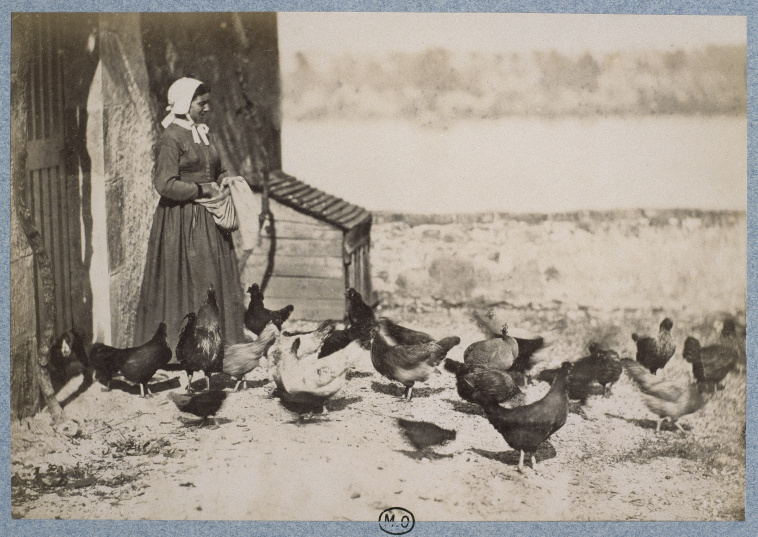
Regardless of how they lived back in their eastern origins, women in frontier settlements would have had to participate in the tasks necessary for the establishment and maintenance of homes and farms. There was cooking, cleaning, caring for children, laundry, and even working in the fields to occupy days (and according to television and movies, lots of pies to bake). The success of the family farms or enterprises depended on each person’s physical contributions, and there was no outsourcing of domestic tasks. A day full of manual labor would have been something frontier women got used to, and fast.
The general dress styles popular in the rest of the country carried over into the wardrobes of pioneer women, namely fitted bodices and very full skirts. However, notable alterations were made to accommodate the realities of frontier living. Skirts were hemmed three inches shorter for day-to-day dresses, making it easier to move from task to task. It was possible that they would have also had weights sewn into the hem to prevent improper exposure on a windy day.
While the bodice remained tight, sleeves were loosened and worn down to the wrist, accompanied by a high collar to protect against the sun.
Of course, laundering pioneer clothing was a big job, and one that women would have to take on, regardless of how used they had previously been to doing it themselves. I came across an interesting reference to “wash dresses” in the book How the West Was Worn by Chris Enss that reads: “Caring for clothing, regardless of whether the item was homemade or store-bought, required work and time. In 1867 a two-piece dress of white cotton with a printed background became popular due to its easy care and was sold in stores, then duplicated by seamstresses throughout the West. The garment was known as the “wash dress” because it could be laundered easily. Women from all socioeconomic backgrounds wore “wash dresses.” While I haven’t yet uncovered further sources for the “wash dress,” it does make sense that fashion would have quickly adapted to meet the needs of the families living “out West.”
Put on your Sunday best
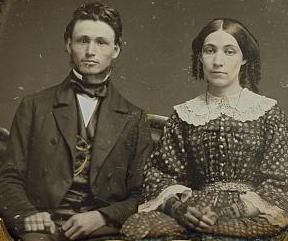
While many families moved onto land and lived free of neighbors for long periods of time, settlements with multiple families nearly all had churches and regular attendance would have been an unspoken rule between community members. And while I did find references to women in poor communities arriving barefoot to church during this time, a more common situation would have been for women to have a dress or two reserved for wearing on Sundays. Then again, there is more documentation about settlers with more privileged circumstances, so it is hard to know for sure what reality was most common.
Women’s ‘Sunday best’ on the frontier looked remarkably similar to the fashions of those in cities around the country. Full skirts were worn over petticoats and corsets and during this time the sleeves would have been puffed in various styles including bell, leg-o-mutton, or pagoda. Depending on the decade, it is also likely that the most current skirt style would have been worn on Sundays, whether it be crinoline, hoop, or bustle.
For colors, younger women and the newly married opted for light colors and would switch to darker colors within a few years. Dresses would have been worn with the most fashionable hats possible along with kid gloves and low heeled boots.
Roundups, balls, and parties: dressing for socializing on the frontier
If the means were available, in addition to a small handful of daily dresses and a Sunday dress, women on the frontier would have reserved a separate dress for socializing. There were dances, holiday celebrations, picnics, and many other excuses for gathering as a community and as in eastern cities, women would have been used to dressing for the occasion.
Women would have highly valued these outfits and perhaps sent away for the fabrics from their general store and waited with great anticipation for the chance to try their hand at creating the latest fashions. Nearly everything I read in researching this post referenced Godey’s Ladies Book and the way that women on the frontier would have passed it around to enthusiastically copy the dress patterns or styles found on its pages.
What materials were available for creating new dresses would depend highly on the distance between town to town and which ones had a general store. In many cases, women would not have owned enough dresses to pick and choose what they wore when. In these cases, the best dress they owned would have been used for special events and various embellishments would have been added to dress up the ensemble. Options such as hand-crocheted collars and shawls would have been popular, as well as a host of other accessories that we will look at now.
Accessorizing on the frontier
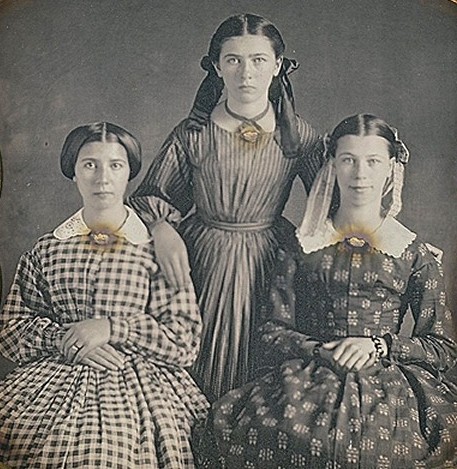
Something else that I learned while preparing for this post was the significance of women’s accessories in the frontier wardrobe. While I thought it was all about hoop skirts and calico, I’ve come to understand that the finishing touches were a BIG deal! There was such an emphasis on jewelry and accessories in everything I read that I have compiled a list here and plan to return to the topic soon for a future post to describe each in more detail.
Women on the frontier enjoyed accessorizing with:
- Aprons
- Boots
- Brooches
- Lockets
- Earrings
- Precious stones and metals
- Hair adornments
- Hats
- Collars and cuffs
- Gloves
- Undersleeves
- Parasols
- Fans
- Handbags
- Shawls
A surviving legacy
I have recently begun to learn more about my own pioneer ancestors and it’s an interest that has really taken on a life of its own. When I decided to write this post I discovered that while there is an abundance of “prairie style,” “pioneer,” and “western wear” clothing available, it was hard to find historical information about how the women of this time and place navigated their desires for propriety, beauty, and fashion in an existence with so many new physical demands.
It is a topic I look forward to studying more and hope that you will stay tuned for my follow-up post on accessories in the frontier.
Create your own pioneer look:
Browse our entire pioneer clothing collection
Pioneer Calico Blouse and Skirt

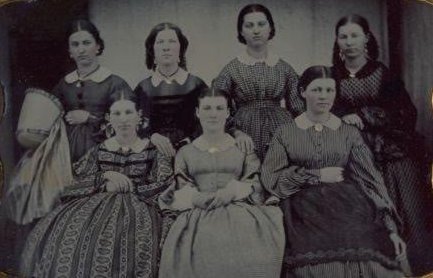
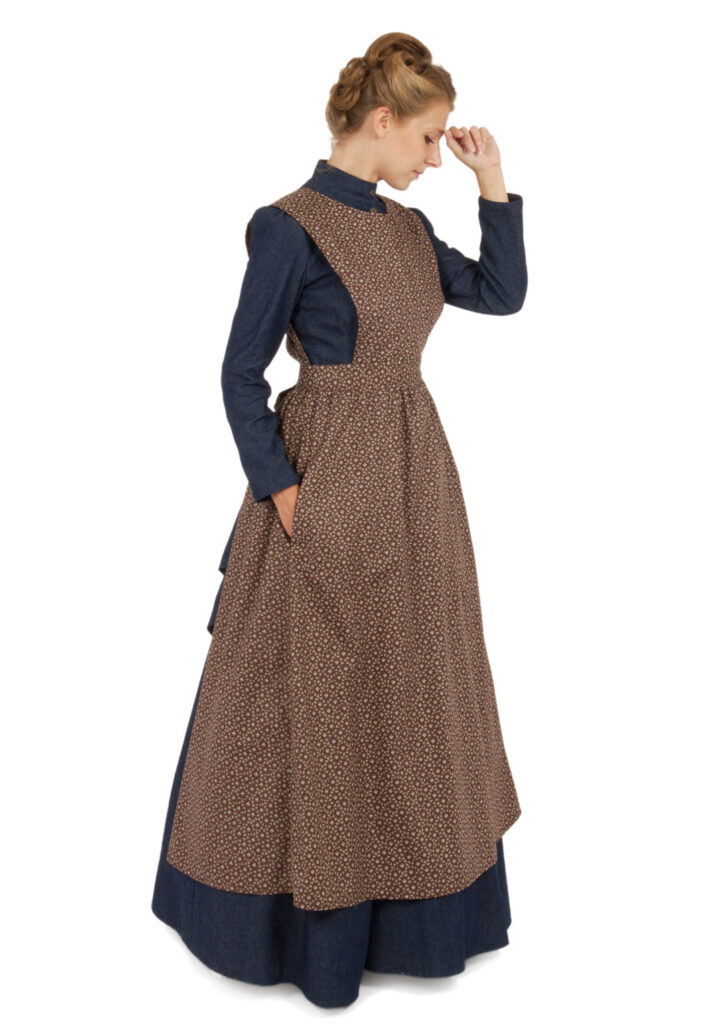
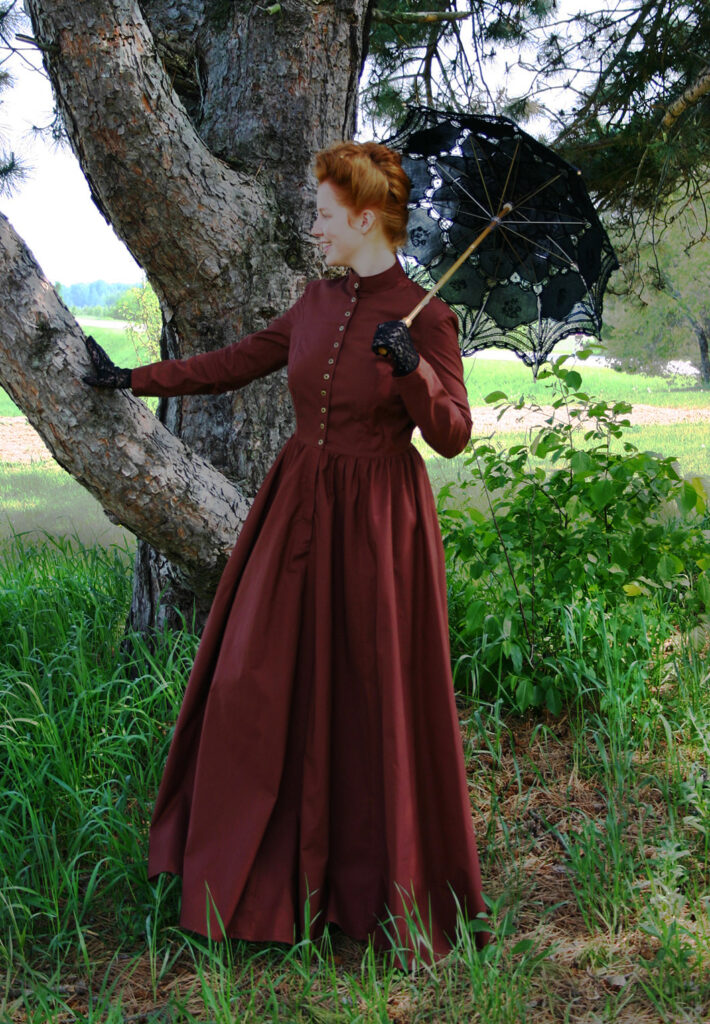
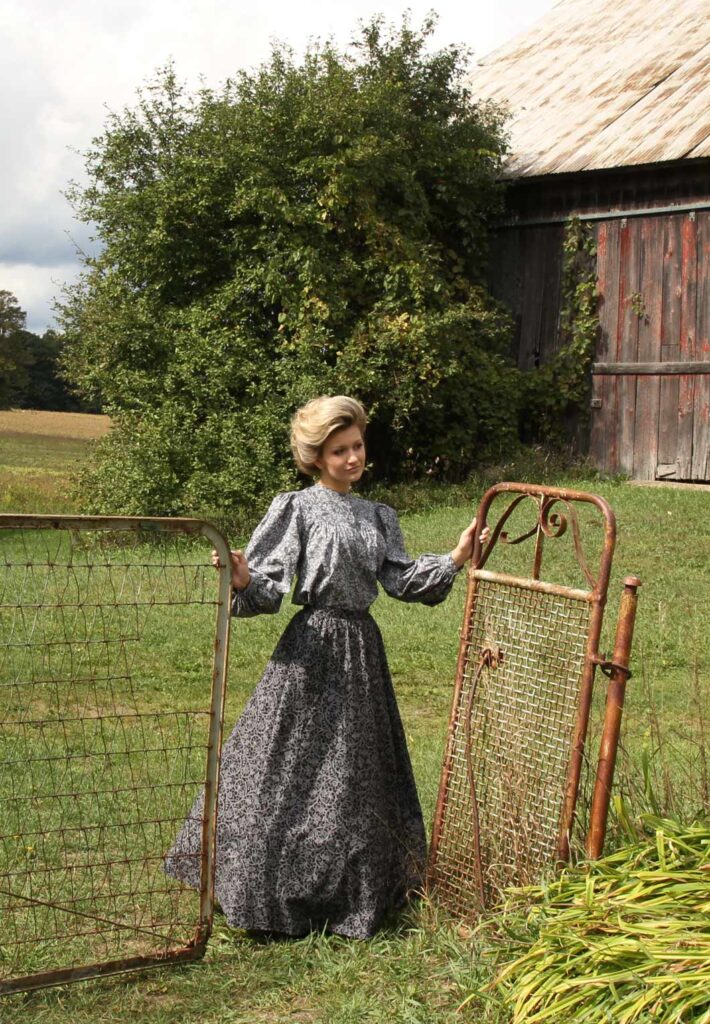
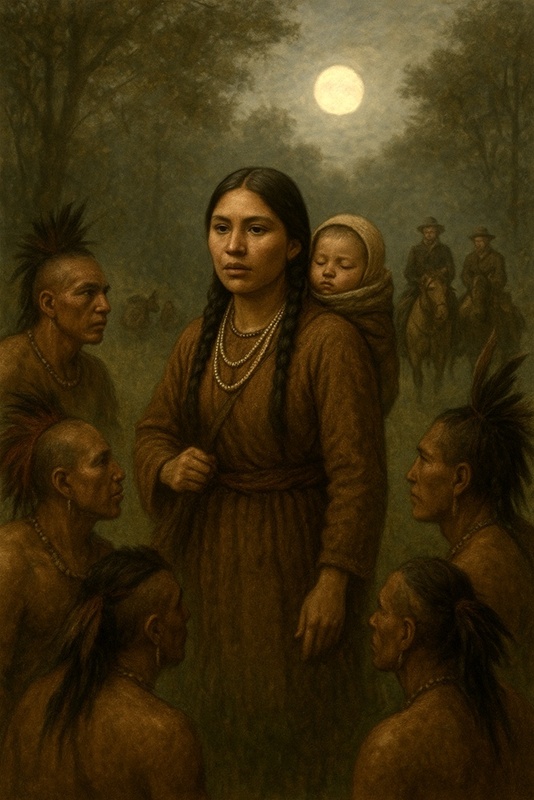



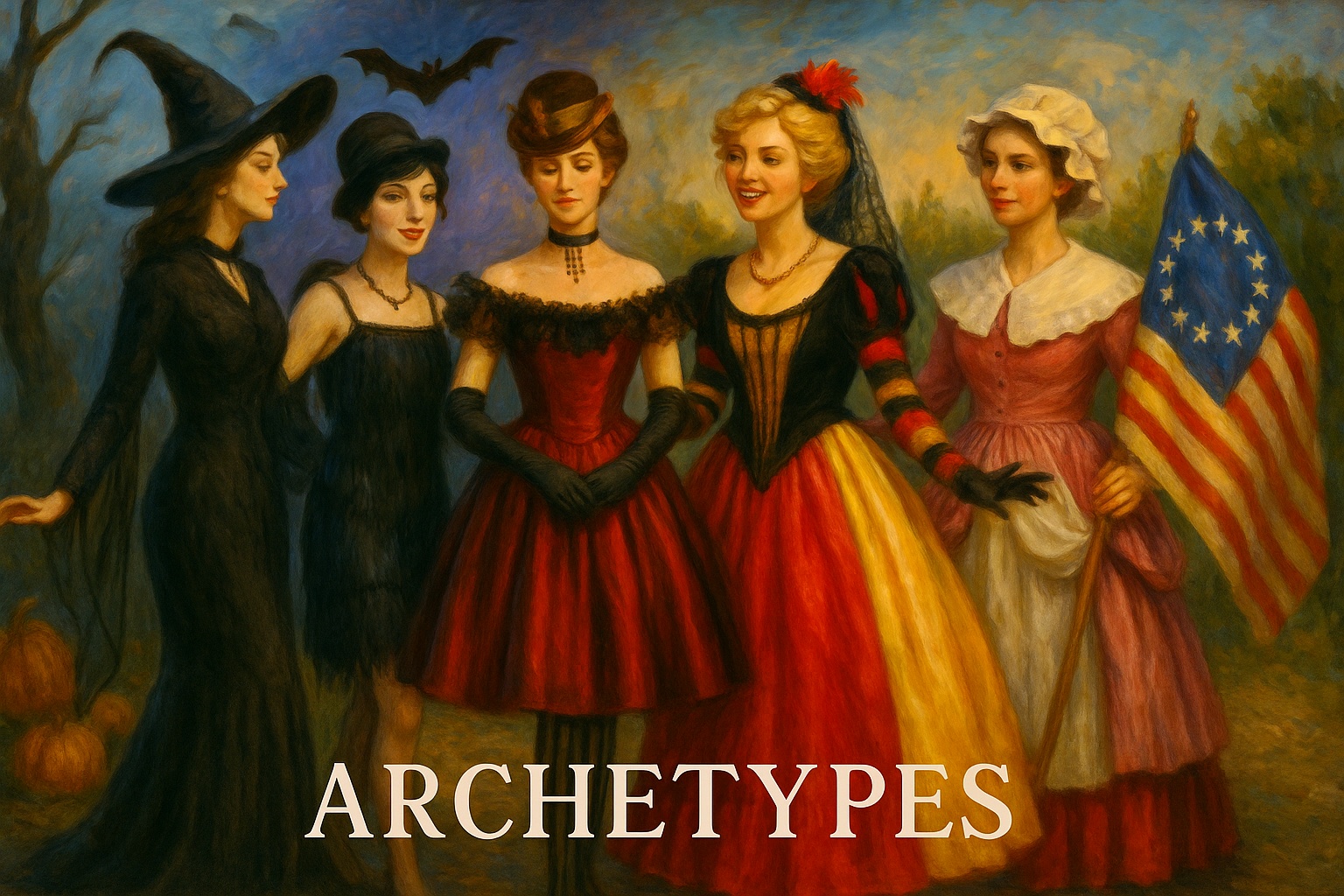
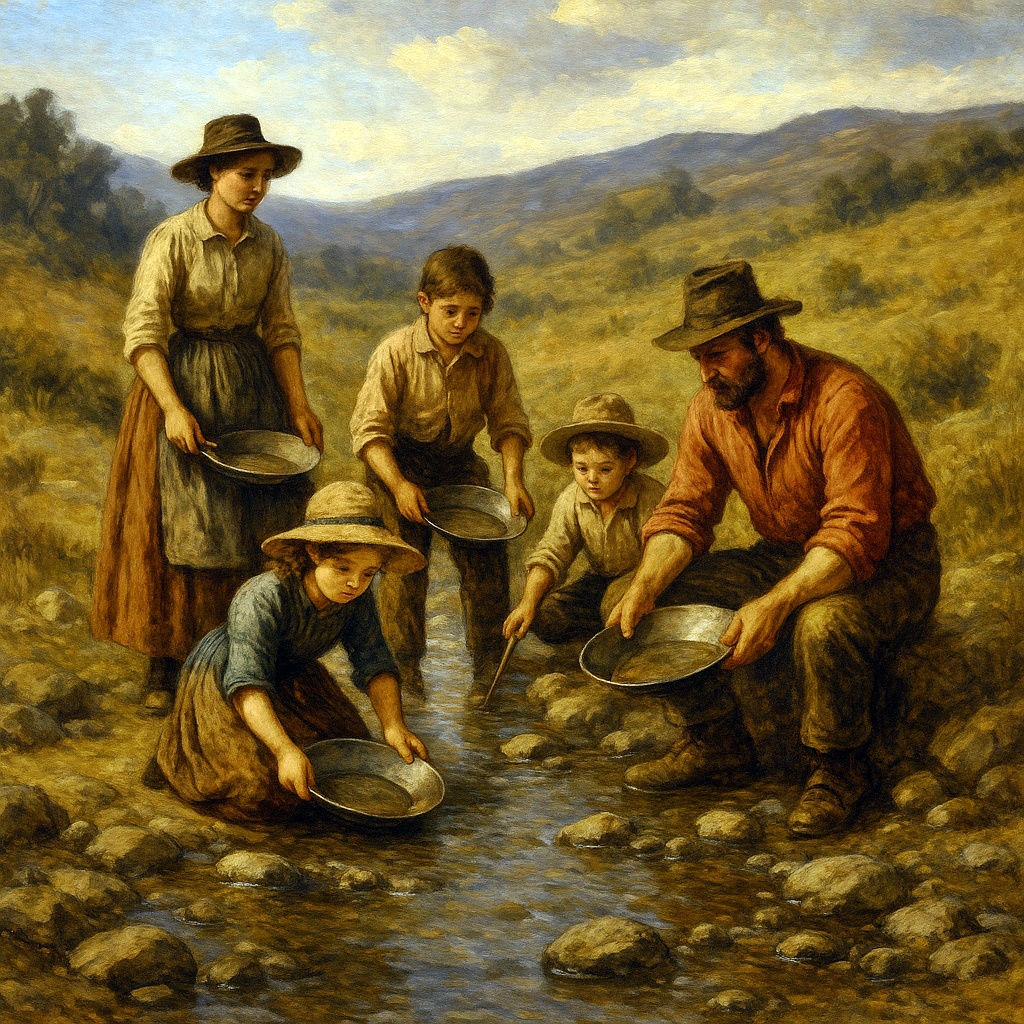






You’re welcome!
This article does a fantastic job of bringing pioneer women’s clothing to life! It’s fascinating to see how practical needs and limited resources shaped such durable and resourceful fashion on the Western frontier. Thanks for sharing
I really enjoyed reading this blog about pioneer clothing! It’s fascinating to learn about the daily lives of women in the Western frontier and how their fashion choices were influenced by their surroundings and lifestyle. The use of calico fabric and the importance of corsets are particularly interesting. Great post!
Fascinating post! I had no idea about the challenges women faced when it came to clothing in the Western frontier. The details about pioneer clothing, like the importance of aprons and sunbonnets, are so interesting. Thanks for sharing this piece of history!
Not likely, long sleeves would have made them unnecessary and during the winter heavy coats were preferred.
Thanks for reading!
Hello there, i’m doing my best to be as accurate as possible
I have one question : did women in the late 1870’s wear knitted
cardigans or knitwear over a blouse with a skirt
thanks a lot for answering
jacqueline
The reason I found this article is I was watching the tv show 1883. I am interested more in women that deviated from provincial clothing, and rather took on men’s attire to do the hard work required to survive. It makes no sense to me women of the period routed out west to wear to me what was entirely impractical. I can’t speak for myself if I existed then as a female, but my mind today would have given that attire up pretty quickly.
thanks for the post
Thank you for a very interesting post, Janice. I’m currently writing a (true) scene set in 1893 where my great-grandmother, a California-born ranch woman living in the hills near La Panza, was visited by her very proper and rather formidable English mother-in-law. The mother-in-law’s clothing is easy to figure, as she was in mourning, well-off, and, as I said, very proper, but my G-grandmother’s clothes were a bit of a puzzle. Temps there can be very high in summer. I was trying to decide on fabric and corset or not. You’ve helped me a lot here.
The message that keeps coming through as I’m writing my books is that frontier women worked hard about 150% of the time and very often were either pregnant or nursing. A hard life, and often a short one. I love to think of them having one or more pretty dresses and a hat to wear on Sunday and for visiting.
Many thanks!
Carolyn M. Osborne
Thank you for reading, Cyndi!
Thank you for answering my question about whether or not women during that time/area were still wearing there stays. I’m looking forward to any/all furniture posts
That is a great idea, thank you! And yes, being from Arizona I cannot imagine wearing boots and corsets in the summertime, let alone all of the other layers! You’re right, pioneer women wouldn’t have had the luxury of just wearing as little as possible during those months. I wonder if they knew any better/different…
I’m really enjoying your posts! I found this article to be quite interesting, especially since I have a lot of pioneer ancestors from different time periods.
I was raised in the deserts of Southern California near Yuma. The pioneers there started arriving in the 1900. Growing up there makes me amazed, and curious, about how women handled living in such harsh, hot climates. Since you are originally from Arizona you know what I’m talking about! Maybe one of your articles could be about that. Perhaps that one could be posted in July or August when we’re all feeling sorry for ourselves!
Again, thank you!
I am a DUP member as well! Thank you so much for reading! If there are any topics you would like covered please let me know.
I am also a Daughter of Utah Pioneers and really loved this article. I look forward to seeing more on the subject of pioneer women.
Thank you! In my research for this post I did come across some databases that I wanted to join, I was then quickly led down a rabbit hole and never settled on one. I think that it will be a long and quite enjoyable journey. Thank you again for reading!
For stockings, I would gather any female worth her salt knew how to knit and then darn. Socks of different lengths/weights worn with lace up boots of that era or what could be bought, and footwear accommodating to weather, area, work being done, and very sturdy. In addition, what any found trading posts had to offer made by the natives, settlers, opportunists, craftsmen. Thinking these assorted seasonal socks worn would be held in place by how tall the fitted or lace up footwear was, then as the Native Americans held up their footwear was also copied. It was evolve or die, being feet are extremely important and the lack of knowledgeable medical care available.
Hello, I have found with “hard to find historical information” it is the search engines used,
it is helpful to branch out to university-based, genealogical, war era’s, major American history, famous artist/political figure (who would make history)- those websites. Sometimes think backwards…who would have a huge amount of information on the era or person, happening of that era…
then work back from there to time, an actual place that would have enough people to make history, type of people/money wise also who could afford, clothing, etc.
I write and keep in my Favorites a whole folder of these websites ready to go.